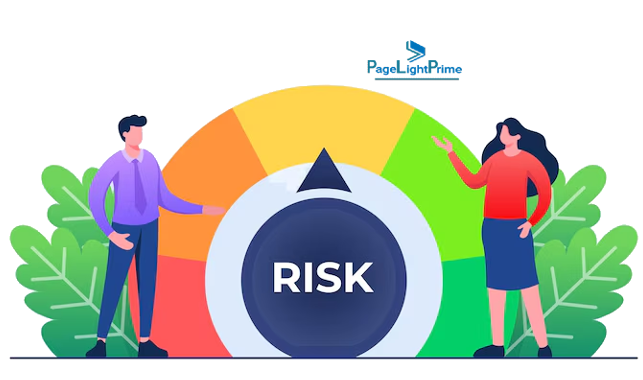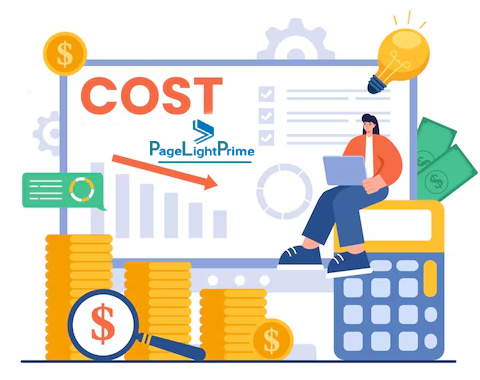Findability, Not Searchability: The Key to Effective Document Management in Law Firms
In the legal industry, where time is of the essence and accuracy is crucial, the ability to quickly locate the right documents can make all the difference. While traditional document management systems emphasize searchability, this approach often falls short in the complex environment of law firms. This blog explores why findability, rather than just searchability, is critical in document management solutions for law firms and provides insights on optimizing your system for maximum efficiency.
Written by Knowledge Team, posted on Aug 20, 2024

The Limitations of Traditional Searchability
Traditional search functions in document management software are largely based on keyword searches, which can often result in an overwhelming amount of irrelevant information. For example, searching for the term “contract” in a legal document management system may generate thousands of results, requiring additional time to sift through non-relevant documents. This inefficiency not only wastes valuable time but also increases the likelihood of missing crucial information.
Furthermore, the legal field often involves complex terminology and varied expressions of the same concepts. A basic search function might not capture all relevant documents, leading to incomplete research and potential legal risks. For law firms, where precision is non-negotiable, traditional searchability is insufficient.

Case Study: The Pitfalls of Searchability
Consider a large law firm handling a high-stakes corporate merger. The firm’s legal team needs to review a series of contracts spanning multiple years. Using a traditional search function, they might search for a “merger agreement,” resulting in thousands of hits. The team spends hours combing through irrelevant documents, leading to delays and risking missed deadlines. This scenario exemplifies the limitations of traditional searchability.

What is Findability, and Why is it Crucial?
Findability goes beyond searchability by ensuring that the most relevant documents are easily accessible based on context, metadata, and user needs. Unlike basic keyword searches, findability focuses on the ability to locate the *right* document quickly and with minimal effort. In a law firm, where every minute is billable and the accuracy of information is critical, findability ensures that legal professionals can access the precise documents they need, improving both efficiency and service quality.

Factors Affecting Findability in Document Management Systems
To enhance findability in your law firm’s document management solution, several factors need to be considered:
Metadata and Tagging
Effective metadata and tagging practices are essential for categorizing documents in a way that makes them easily retrievable. For instance, documents could be tagged with client names, case numbers, legal terms, and document types. This structured approach ensures that documents are not just stored but are also accessible in a contextually relevant manner.
Document Organization
The organization of law firm documents within the system should reflect the firm’s workflows and legal processes. A logical folder structure, consistent naming conventions, and intuitive categorization can significantly enhance findability.

User Interface
An intuitive user interface that facilitates easy navigation is critical. The design should allow users to quickly find documents without needing to navigate through multiple layers of folders.
Advanced Search Capabilities
While basic search functions have their limitations, combining them with advanced features like Boolean operators, filters, and saved searches can improve findability, making it easier to locate specific documents.

Case Study: Enhanced Findability in Action
A mid-sized law firm specializing in intellectual property cases implemented a document management solution focused on findability. By tagging documents with specific metadata related to patents, legal precedents, and case history, the firm drastically reduced the time spent searching for relevant documents. The firm reported a 30% increase in efficiency, allowing lawyers to focus more on client work and less on administrative tasks. This improvement not only enhanced productivity but also contributed to better case outcomes and client satisfaction.

The Benefits of Improved Findability for Law Firms
Enhanced findability offers numerous benefits that extend beyond simple efficiency.
Increased Efficiency and Productivity
Quantitative data from firms that have implemented findability-focused solutions show a 20-30% reduction in time spent searching for documents. This increase in efficiency translates into higher productivity, as legal professionals can dedicate more time to billable work rather than administrative tasks.
Enhanced Client Service
Clients expect timely and accurate responses. With improved findability, law firms can quickly access the necessary documents to respond to client inquiries, prepare cases, and provide updates. This level of service not only meets client expectations but also enhances the firm’s reputation and client retention. In one case, a law firm reported a 15% increase in client satisfaction scores after implementing a system optimized for findability.

Improved Compliance and Risk Management
Enhanced findability ensures that compliance-related documents are easily accessible, reducing the risk of non-compliance and potential legal penalties. Additionally, by ensuring that legal teams are working with the most relevant and up-to-date information, firms can mitigate risks associated with outdated or incorrect information.
Reduced Costs and Increased Revenue
Improving findability can lead to significant cost savings by reducing the time spent on non-billable activities such as searching for documents. This efficiency can increase billable hours and improve the firm’s bottom line. Additionally, reducing the risk of legal oversights can prevent costly legal disputes and penalties. Firms have reported up to a 10% increase in revenue by optimizing their document management systems for findability.

Findability vs. Searchability: A Closer Comparison
To fully appreciate the advantages of findability in Legal DMS, it’s important to compare it directly with traditional searchability:
Relevance vs. Quantity
While searchability may return a large number of results, findability focuses on delivering the most relevant documents based on context and user needs.
Efficiency
Findability reduces the time and effort required to locate documents, whereas searchability may require additional steps to filter and refine search results.
User Experience
Findability enhances the user experience by providing intuitive access to documents, whereas searchability can lead to frustration due to irrelevant or overwhelming results.

Case Study: The Cost of Ignoring Findability
A law firm handling a complex litigation case relied on traditional searchability for document retrieval. Despite spending hours on searches, the team missed a critical document that could have significantly impacted the case. The oversight led to a less favorable outcome, damaging the firm’s reputation and resulting in a dissatisfied client. This scenario highlights the risks associated with relying solely on searchability.

Addressing Potential Concerns
While the benefits of improved findability are clear, some law firms may have concerns about the cost and complexity of implementing new strategies. It’s important to consider that the initial investment in upgrading your document management system can lead to long-term savings and increased revenue. Modern document management solutions are designed to be user-friendly and scalable, making the transition smoother and less disruptive than one might expect. Additionally, the cost of missing crucial documents due to poor findability can far outweigh the investment in a better system.
Conclusion
“
In the competitive legal environment, findability is not just a buzzword—it’s a strategic advantage. By focusing on findability rather than just searchability, law firms can significantly enhance their efficiency, improve client service, better manage risks, and ultimately increase revenue. Implementing a document management solution that prioritizes findability is essential for law firms looking to stay ahead in today’s fast-paced legal landscape.
“
Glossary of Legal Terms
- Metadata: Information embedded within a document that describes its content, such as author, creation date, and document type. Metadata helps in categorizing and retrieving documents more efficiently.
- Tagging: The process of assigning keywords or labels to documents to aid in their organization and retrieval. Tags often include terms related to the document’s content, such as case numbers, client names, or legal topics.
- Findability: The ease with which users can locate the right documents within a system based on context, metadata, and user needs. It focuses on ensuring relevant documents are accessible with minimal effort.
- Searchability: The ability of a document management system to retrieve documents based on keyword searches. Traditional searchability may return a large number of results, which can be overwhelming or irrelevant.
- Boolean Search: A search technique that uses operators like AND, OR, and NOT to refine search results. For example, searching for “contract AND merger” would return documents that contain both terms.
- Document Organization: The structuring of documents within a system to reflect workflows and processes. This includes creating logical folder structures and consistent naming conventions to improve retrieval efficiency.
- AI (Artificial Intelligence): Technology that simulates human intelligence to perform tasks such as categorizing and tagging documents. AI can enhance findability by automating these processes and predicting user needs.
- Machine Learning: A subset of AI that enables systems to learn from data and improve over time. In document management, machine learning can analyze document content to suggest relevant tags and improve search results.
- Compliance: Adhering to legal and regulatory requirements related to document management and record-keeping. Effective findability ensures that compliance-related documents are easily accessible.
- Risk Management: The process of identifying and mitigating potential risks, such as legal oversights or compliance issues. Improved findability helps in managing these risks by ensuring relevant documents are readily available.
- Client Retention: The ability of a firm to maintain its client base over time. Enhanced client service through improved findability can contribute to higher client satisfaction and retention.
